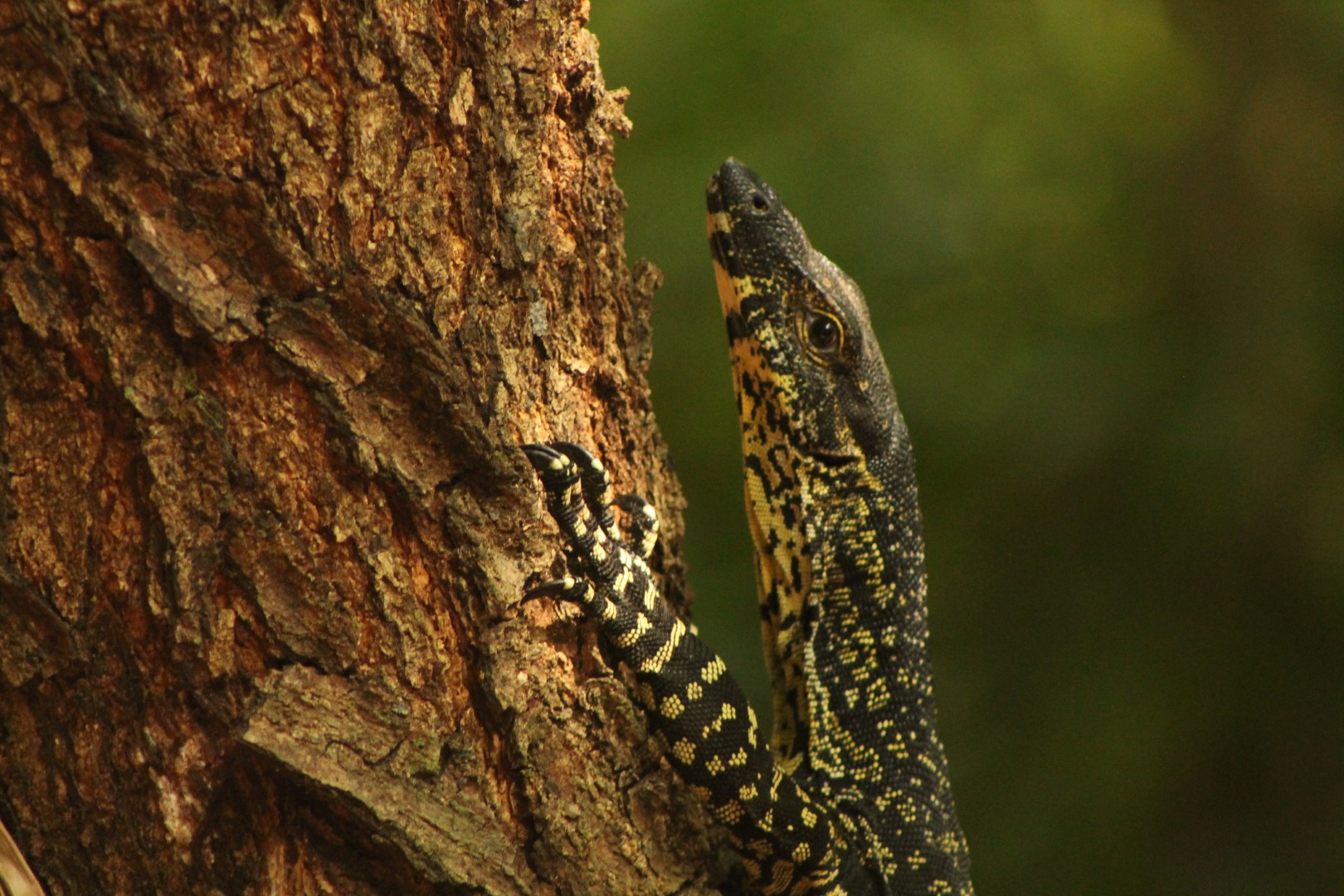
During a walk in the Whitsundays, as you meander through the strangler, sandpaper, and cluster figs, you might catch sight of a small, lizard-like shadow darting across the footpath, rustling through the bushes, or clinging to a tree trunk. If you do, there’s a good chance you’ve spotted a Lace Monitor, also known as a Goanna.
While Goanas are often encountered on most bush walks, they are actually subject to habitat loss, from development, land clearing and road mortality. Another significant and growing danger is the increasing spread of non-native Cane Toads. Lace Monitors, with their diet of birds, carrion, eggs, small mammals, and other reptiles, often consume Cane Toads, which are toxic, leading to their death from poisoning. Cane Toads, in conjunction with habitat degradation, are putting increasing strain on Lace Monitor populations.
Things you can do right now to help protect these marvellous animals:
• Report any sightings of goannas, dead or alive to Fauna Rescue Whitsundays (07 4947 3389)
• Protect native vegetation and termite mounds in your local area, which is where Lace Monitors lay their eggs.
• Be a responsible pet owner by keeping pet cats indoors and dogs on a lead.
• Leave valuable habitat like fallen trees, logs and smaller timber in the bush and on grazing land.
• When driving, slow down for goannas to let them cross roads safely (and be especially mindful around road kill, which may attract goannas onto the road).
• Get involved in local restoration and revegetation programs to help increase habitat and
connect remnant bushland.
Did you know?
The Lace Monitor can grow up to 2M long, making it the second-largest lizard on the continent.
Whitsundays Lace Monitor showing off its climbing skills. Photo credit: Ruth Puddefoot.